[Use Case Story] WWF Climate & Energy: Create your smartest data-driven content strategy using audience intelligence
The personalisation of content is a determining factor in increasing its effectiveness. When a content strategy is proposed, and customization is worked on, it is necessary to take into account not only where and when we are going to deliver these pieces of content to our target audiences. If an approach focused on the audiences themselves is adopted, the messages to be communicated will be defined much more strategically and effectively.
Audience intelligence allows us to embrace this audience-centrist approach also in the planning and development of content strategies. When we put the target audiences at the center of our strategy, we can not only become aware of how individuals are in demographic terms, but also know what their motivations are, what influences them, how they consume content and of what kind, among other insights.
On this occasion and to exemplify all this, we developed a story around the use case of audience intelligence applied to data-based content creation strategies, taking the World Wildlife Fund as the protagonists and specifically the movement against climate change, "WWF Climate & Energy." Making the goal of the content creation strategy to generate brand awareness about “WWF Climate & Energy”.
In this use case we will cover the following stages:
- Audience identification.
- Analysis of the target audience.
- Defining criteria for content creation.
What is the audience?
To begin, we have identified with Pulsar TRAC the conversation and who the audience is behind that conversation about climate change. They included any of these keywords #wwfclimate, #wwfplanet, wwfclimate, climatewwf, #climatewwf, @climatewwf. The social listening query of these conversation topics spanned from the beginning of this year to this moment now (end of November).
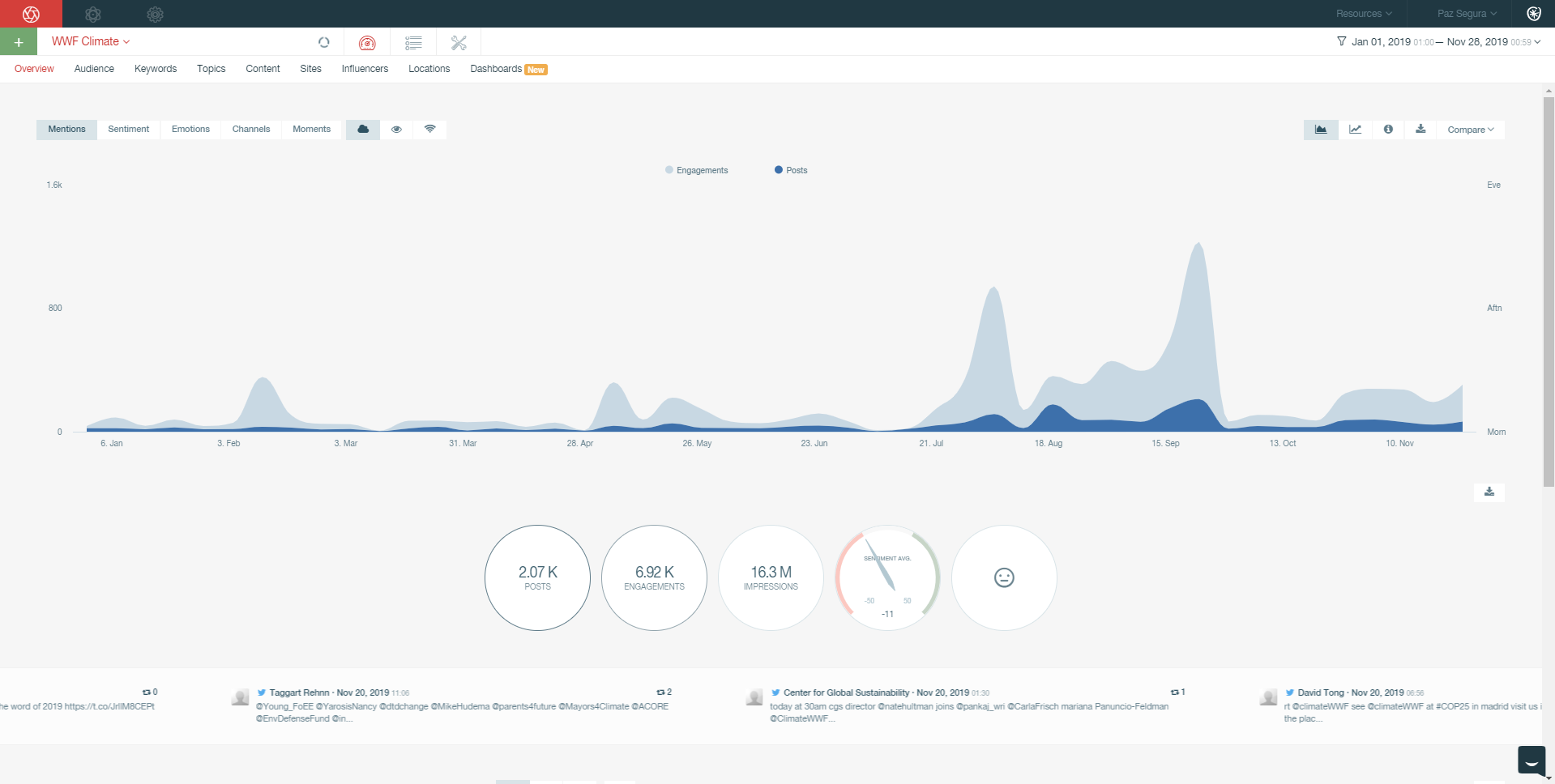
This allows us to create an intelligence report within Audiense Insights about this audience and thus analyze who are those people participating in the conversation: an audience that is interested in the topic and whose members already know WWF Climate & Energy directly or indirectly. As it is an awareness campaign, we will look at who are the people that already participate in the conversation to look for insights that can help us feed the message we want to create and transmit in the contents.
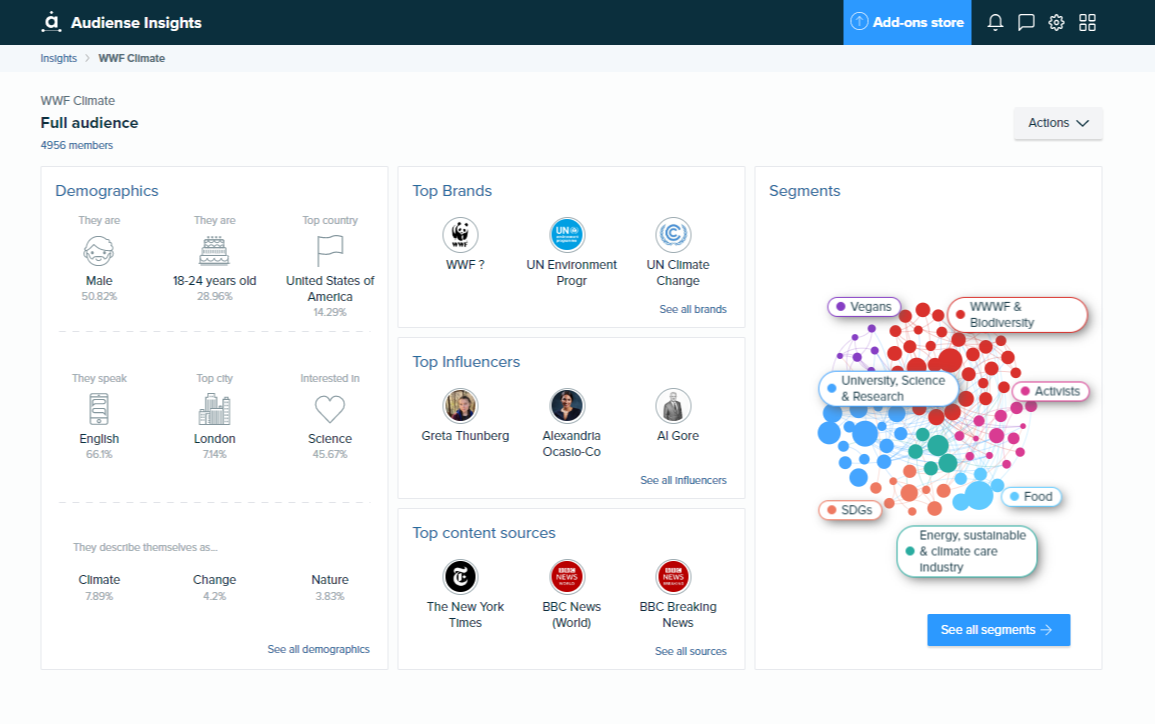
If instead of an awareness campaign, as we propose in this example with WWF Climate & Energy, the objective of the brand was, for example, the launch of a new product, a more appropriate approach when defining the audience of interest would be, for example, to identify and analyze the audience of the competitors, in order to know and appeal to their attention with the contents and messages created from the insights obtained through audience intelligence on those audiences.
Knowing and understanding the audience
Understanding your target audience is essential in any marketing strategy. The creation of customer personas from the insights obtained thanks to the audience intelligence allows the creation of personalized content both for the audience globally and for the different segments that compose it.
The characteristics and insights that may be common to the global audience may differ when we look at the individual segments that make up the audience. From demographic characteristics to personality traits, interests and influencers or online shopping and online habits.
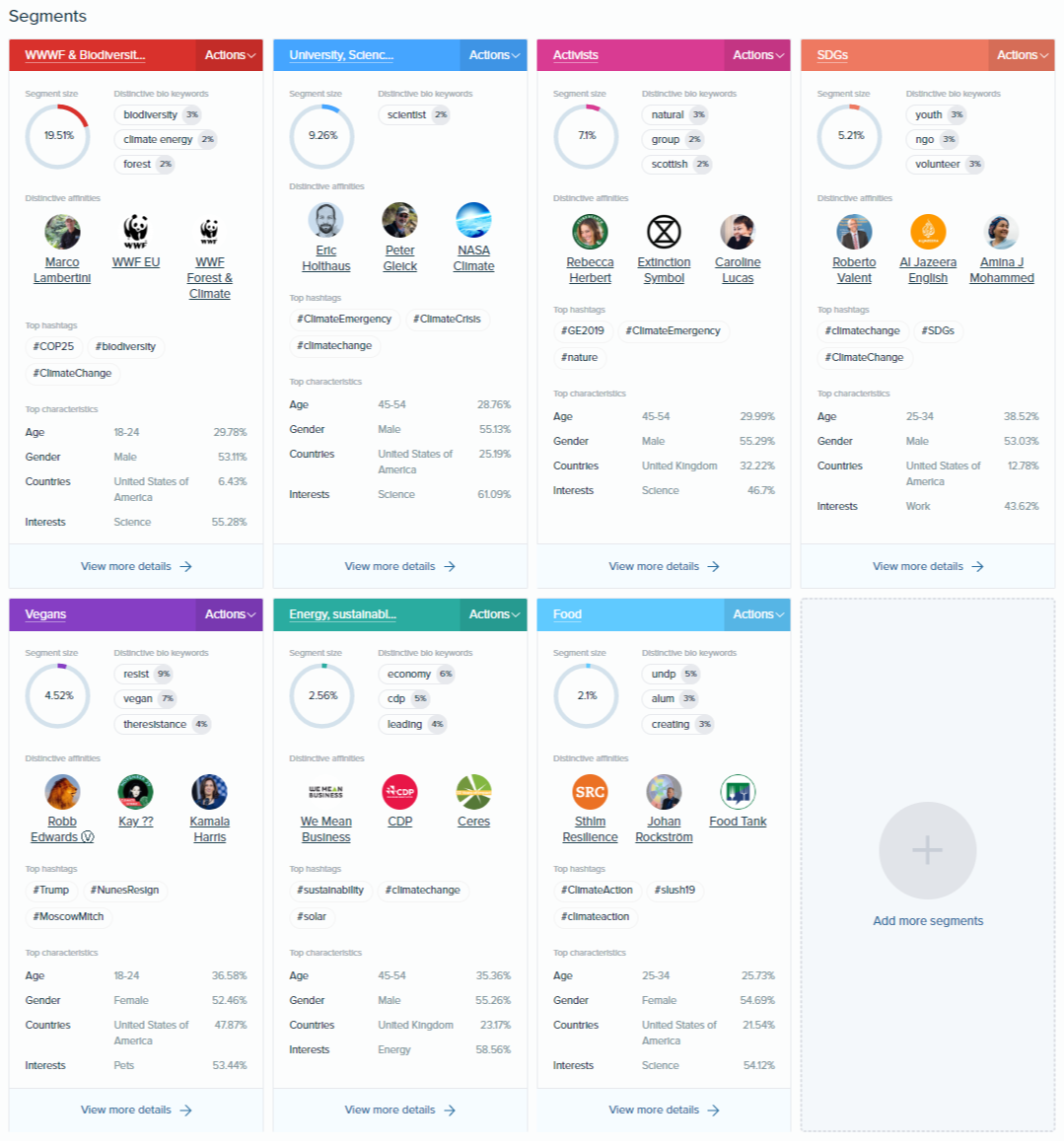
The analysis of the social conversation with a focus on the audience favors the study and identification of the different topics of interest for the different segments.
In the case at hand, we see how the contents that have had the most resonance for the global audience of this conversation have been informative content about actions and plans to face the climate crisis, the melting of glaciers at the poles and One Planet City Challenge.
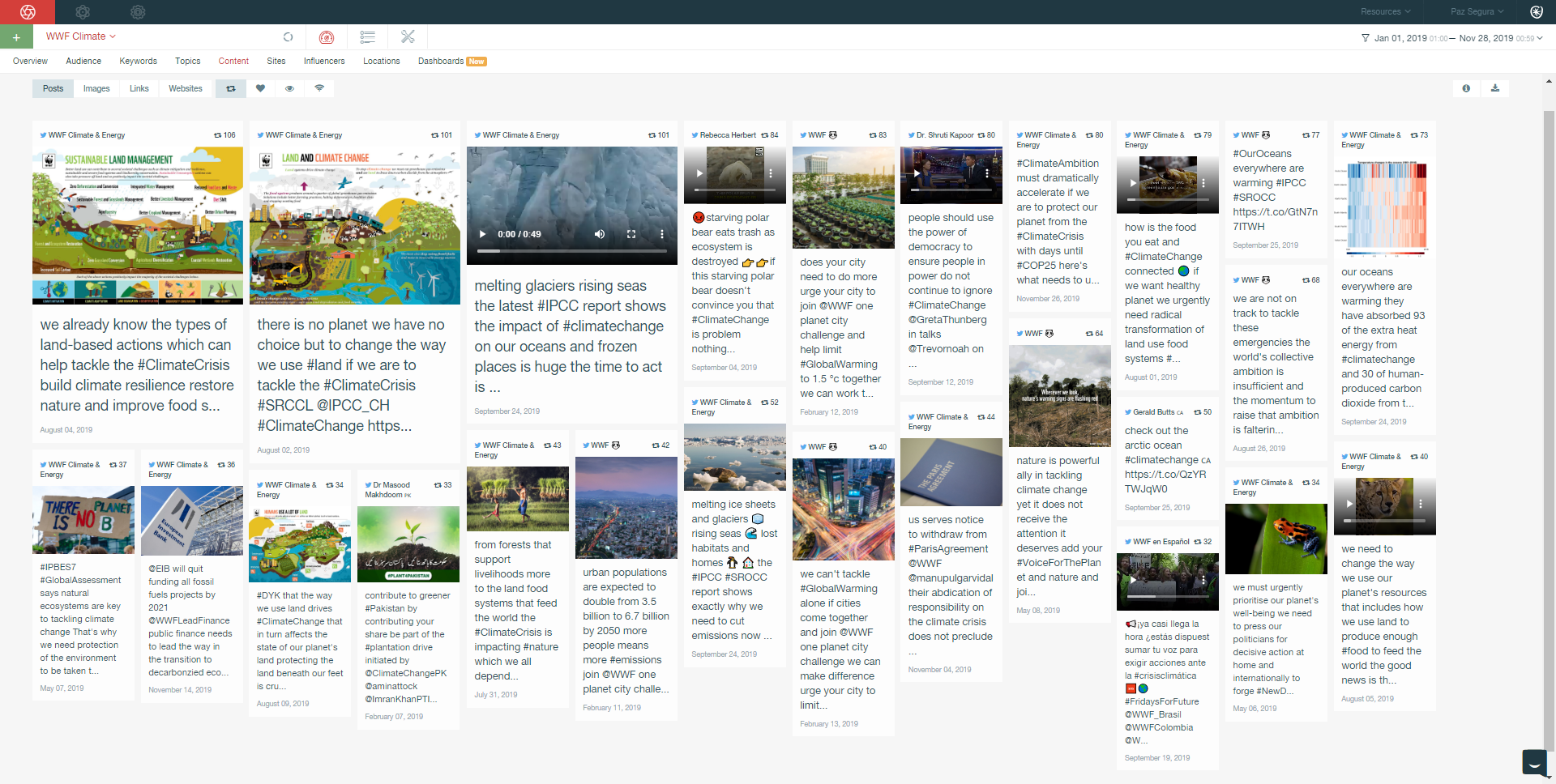
However, if we look at the segments individually and their participation in the social conversation we see that for the Activists segment the publications that have had the most impact were about the situation of starving polar bears, the celebration of the ban of plastic bags in Bali and informative content about the danger of climate change to biodiversity.
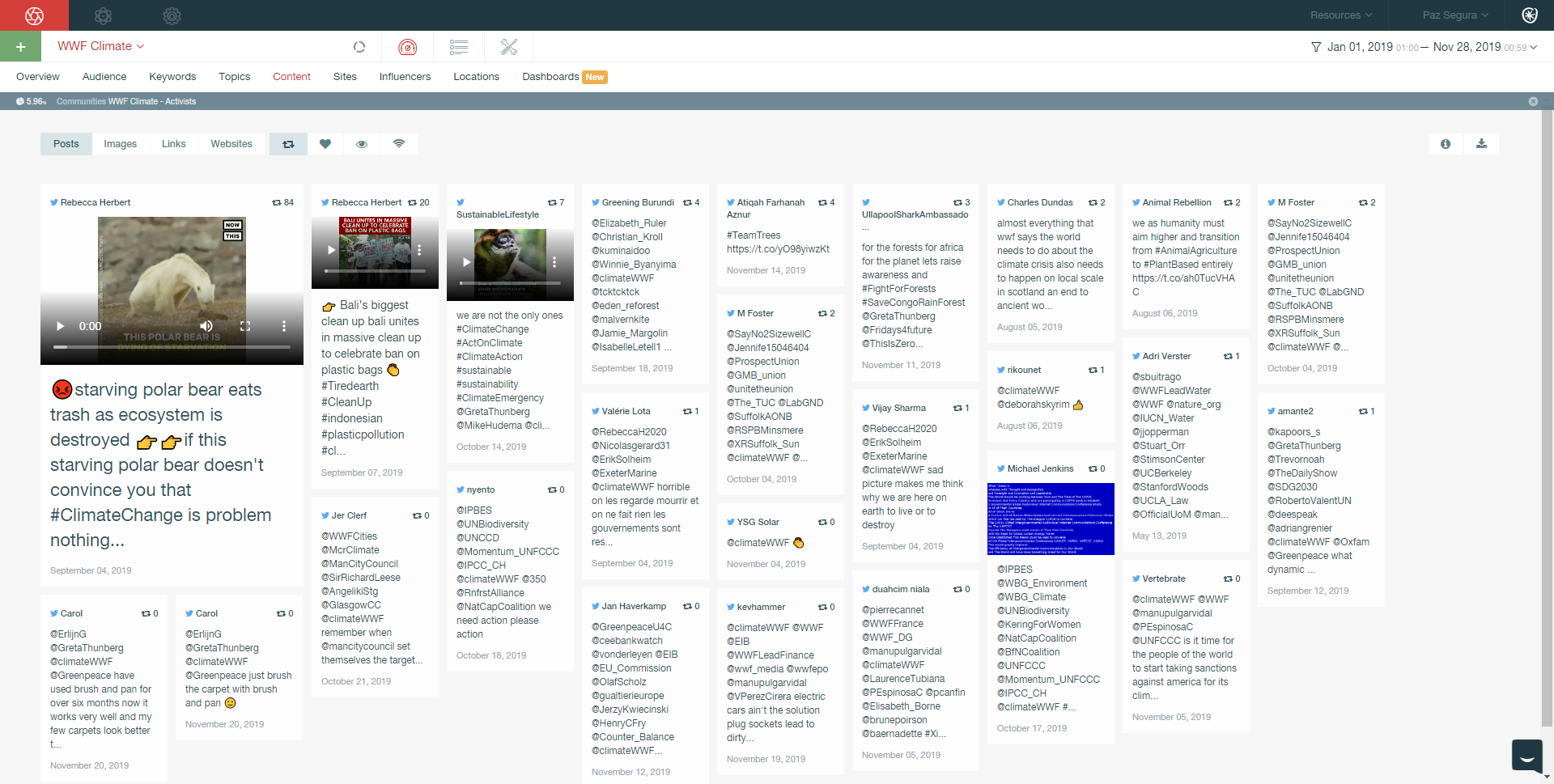
And if we stop to observe the "Energy, Sustainable & Climate care industry" segment, we see that the most relevant topics in their conversation have been the Carbon Positive, Science Based Targets and Climate Strike initiatives.

Creating content strategies based on insights
After having identified the audience and its subsequent analysis and understanding of the individuals that compose it, it is time to define what will be the insights that are used to create awareness campaign content that will resonate within the target audiences.
Audience intelligence enables us to create a combination of insights about interests, personality traits, resonant content, purchase influence factors and other aspects with which to maximize the personalization of each content addressed to each segment.
Thus, for the “University, Science & Research” segment, the content could be created taking into account the following insights:
- These are people among whom the publications that have the most resonance are those that include a link (almost 70%).

- The topics that have the most impact on this audience are those that refer to research, studies and proposals for improvement for the future of the climate and the fight against the climate change crisis.
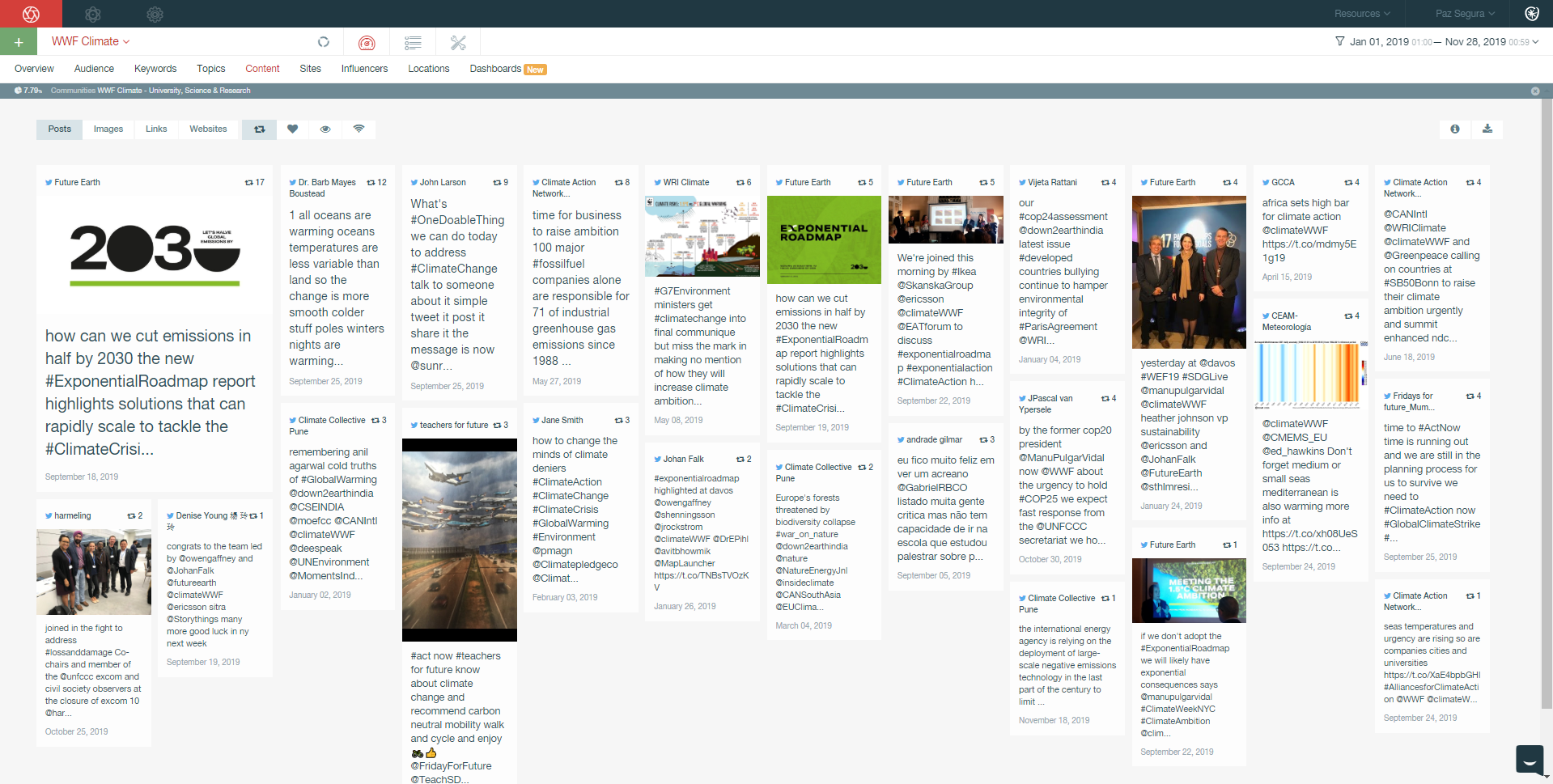
- They are analytical individuals and very open to experimenting and discovering new things. Their need to know and discover leads them to make their decisions in that regard. These are people with courage and assertiveness, who are not afraid to take charge and lead projects.
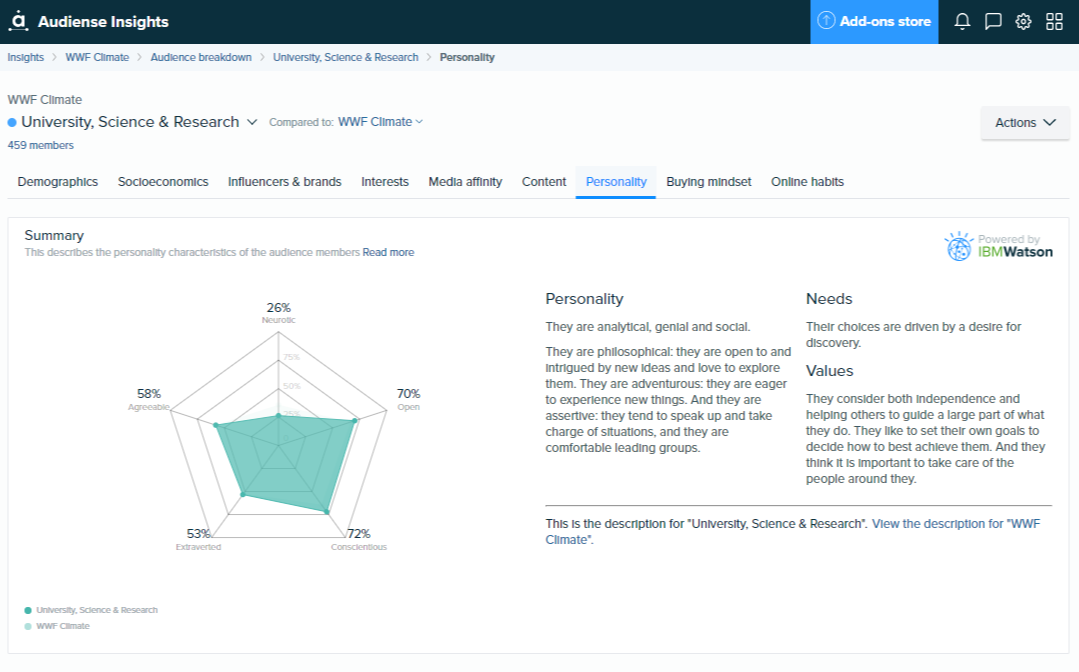
- If we analyze their behavior as consumers, we know that it is a group that values the usefulness of the products more than the rest of the audience analyzed and that respond positively and above average to segmented marketing and advertising campaigns.
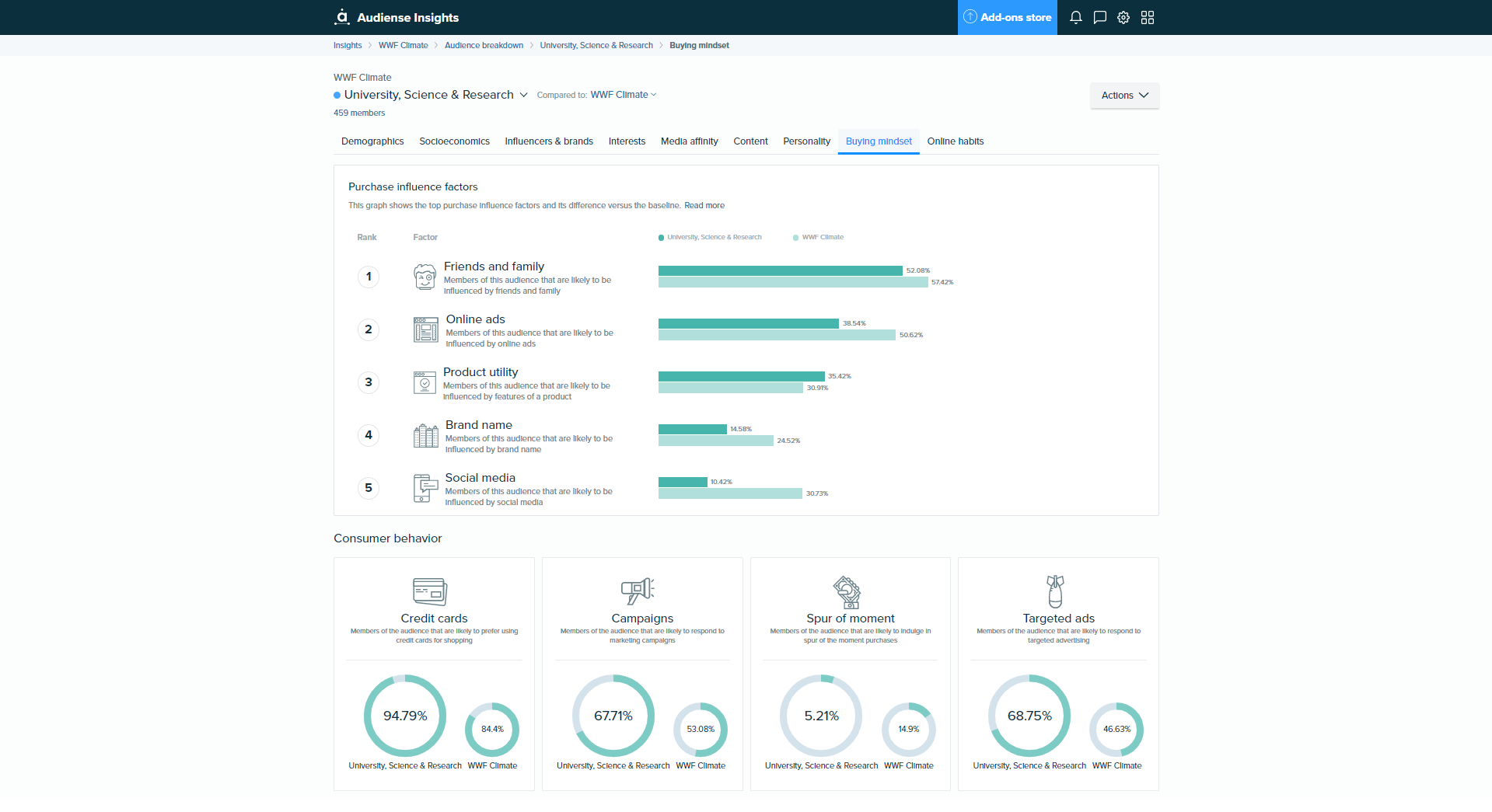
By bringing together all the insights obtained from the intelligence on audiences as we've seen above, we can create a brief/content proposal that met the following characteristics:
- Include data and facts. Referenced in research or studies of influencers and referents for the audience.
- The messages must invite them to be part of the change, encourage them to lead those solutions that help to fight against climate change. To lay the foundations and drive and inspire the concrete measures that favor the brake of this climatic crisis that we live in.
- They want to feel part of a collective group, that cares about the environment, and their mission to take care of each other and the planet must be a fundamental axis around which to develop the message.
- Promote these messages in a segmented way and deliver to this specific segment.
Today we have seen with this practical example based on “WWF Climate & Energy” how audience intelligence can be applied to develop an insights-based and data-driven content strategy. These methodologies are applicable to campaigns with all kinds of objectives since they put the audience in the center.In studying the analysis of the audience, it allows for designing and developing the creation of perfectly personalized content that will have a much more optimised impact and effectiveness than those that develop more generic messages.
If you are interested in being able to develop this type of content strategy for your brand, using audience intelligence about the audiences that really interest you, create your free Audiense Insights account today and start discovering which are the insights that will guide your next campaigns.
Photo by Skye Studios on Unsplash.







